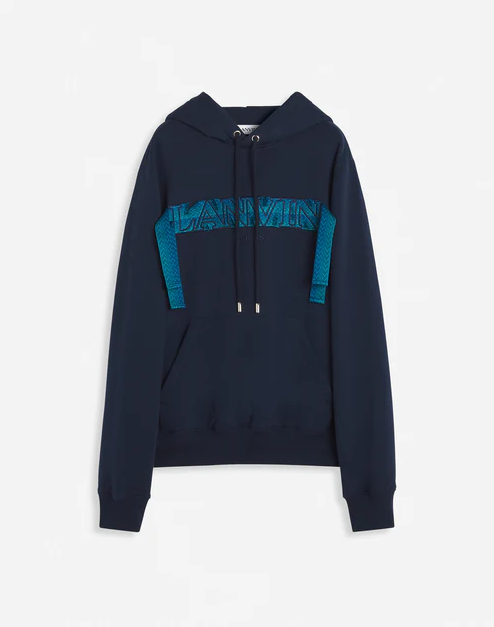Lanvin: The Timeless Legacy of French Haute Couture

Lanvin stands as one of the oldest and most revered fashion houses in the world. Founded in 1889 by Jeanne Lanvin, this iconic French label has consistently captured the essence of Parisian sophistication. From its early beginnings as a millinery shop to becoming a global luxury brand, Lanvin has evolved through the ages while staying true to its legacy of refinement, craftsmanship, and artistic flair.
Jeanne Lanvin: The Visionary Behind the Brand
At the heart of Lanvin’s foundation is Jeanne Lanvin, a pioneer who transformed the landscape of haute couture. Initially trained as a milliner, Jeanne opened her first boutique on Rue du Faubourg Saint-Honoré in Paris. Her designs gained popularity when she began creating exquisite clothing for her daughter, Marguerite. These mother-daughter creations caught the attention of Parisian elites, prompting Jeanne to expand her boutique into a full-fledged fashion house.
Lanvin's early collections were defined by delicate embroidery, romantic silhouettes, and pastel palettes, setting a new standard for elegance. Her artistic sensibility, influenced by her love for the arts, music, and theater, was reflected in every garment she crafted. She collaborated with artists and interior designers to create not only fashion but a lifestyle brand long before it became a trend.
Expansion into a Lifestyle Empire
While Jeanne Lanvin initially gained fame for her couture dresses, her ambition went beyond fashion. She was among the first designers to expand a brand into multiple categories. She introduced menswear in 1926 under Lanvin Tailleur and launched Lanvin Sport for women shortly after. Her venture into perfumes also left a significant mark on the industry.
The debut of Arpège in 1927 became a symbol of Lanvin's multidimensional creativity. Named after her daughter's piano scales, the fragrance embodied the elegance and timeless charm synonymous with the Lanvin brand. It remains one of the most beloved classic perfumes in history.
Jeanne’s dedication to building a holistic brand identity paved the way for future fashion houses to emulate this all-encompassing model, integrating apparel, fragrance, accessories, and interior design.
Design Evolution Through the Decades
Lanvin's design language has continuously evolved, adapting to the shifting aesthetics of each era while maintaining its refined core. After Jeanne Lanvin Sneakers passing in 1946, the house saw several artistic transitions. Over the following decades, designers worked to balance Jeanne's original romanticism with the modern woman's needs.
It wasn’t until the early 2000s that Lanvin experienced a major revival under the creative direction of Alber Elbaz. His tenure from 2001 to 2015 was widely regarded as a golden era for the house. Elbaz reimagined the Lanvin woman as contemporary, confident, and chic, while still incorporating the draping, femininity, and artisanal details that defined Jeanne's vision. His love for fabric manipulation, innovative silhouettes, and storytelling through fashion brought Lanvin back into the spotlight.
The Modern Lanvin Woman and Man
In the contemporary landscape, Lanvin continues to position itself as a brand that blends heritage with innovation. The modern Lanvin woman is elegant yet bold, graceful yet assertive. She wears Lanvin not just to dress, but to express identity, emotion, and sophistication. The menswear line, too, reflects this duality—merging sharp tailoring with a sense of artistic experimentation.
The house has taken strategic steps to remain culturally relevant in an era dominated by digital storytelling and rapid trend cycles. From celebrity red carpet appearances to collaborations with contemporary artists, Lanvin maintains its position as a tastemaker in global fashion.
Shifts in Leadership and Creative Direction
As with many heritage fashion houses, Lanvin has undergone several creative shifts in recent years. Following Alber Elbaz’s departure in 2015, the brand went through a period of transition, with multiple designers taking the helm in quick succession. This era of experimentation sought to redefine Lanvin’s place in a competitive market without losing its soul.
The appointment of Chinese conglomerate Fosun International as the majority owner in 2018 marked a new chapter. This acquisition brought fresh investment and global expansion potential, particularly in Asian markets. Lanvin aimed to grow not only through fashion but through a comprehensive lifestyle approach, echoing Jeanne Lanvin’s original vision.
In 2019, Bruno Sialelli was named Creative Director, becoming the youngest designer ever to lead Lanvin. Sialelli brought a playful, youthful perspective to the brand, injecting new energy while honoring its artistic heritage. His collections blended historical references with contemporary silhouettes, making Lanvin once again a brand to watch.
The Role of Craftsmanship and Sustainability
Lanvin’s dedication to craftsmanship has never wavered. Much like in Jeanne Lanvin’s era, today’s creations are defined by attention to detail, fine fabrics, and artisanal techniques. Embroidery, drapery, and hand-finishing remain central to the production process, distinguishing Lanvin garments as works of wearable art.
In the evolving conversation around sustainability in fashion, Lanvin is also beginning to take steps toward environmental responsibility. While the luxury industry has historically lagged behind in sustainable practices, brands like Lanvin are recognizing the need to innovate with conscience. From sourcing eco-friendly materials to exploring slower production models, the house is actively redefining what luxury means in the 21st century.
Cultural Impact and Enduring Appeal
Lanvin’s cultural footprint is vast, encompassing more than just fashion. It represents a lifestyle steeped in history, creativity, and personal expression. Celebrities, royalty, and tastemakers have all been drawn to the brand’s sophisticated elegance and emotional resonance.
Arpège remains one of the most iconic perfumes in history, while Lanvin gowns continue to grace the world’s most prestigious red carpets. The label's presence in museums and fashion retrospectives only underscores its influence as a cornerstone of modern design.
Looking Ahead: The Future of Lanvin
As Lanvin navigates its second century, the house remains committed to honoring Jeanne Lanvin’s founding principles while embracing the new. The challenge lies in balancing heritage with innovation, nostalgia with relevance. Through thoughtful design, strategic leadership, and a deeper understanding of global fashion dynamics, Lanvin is poised for a promising future.






